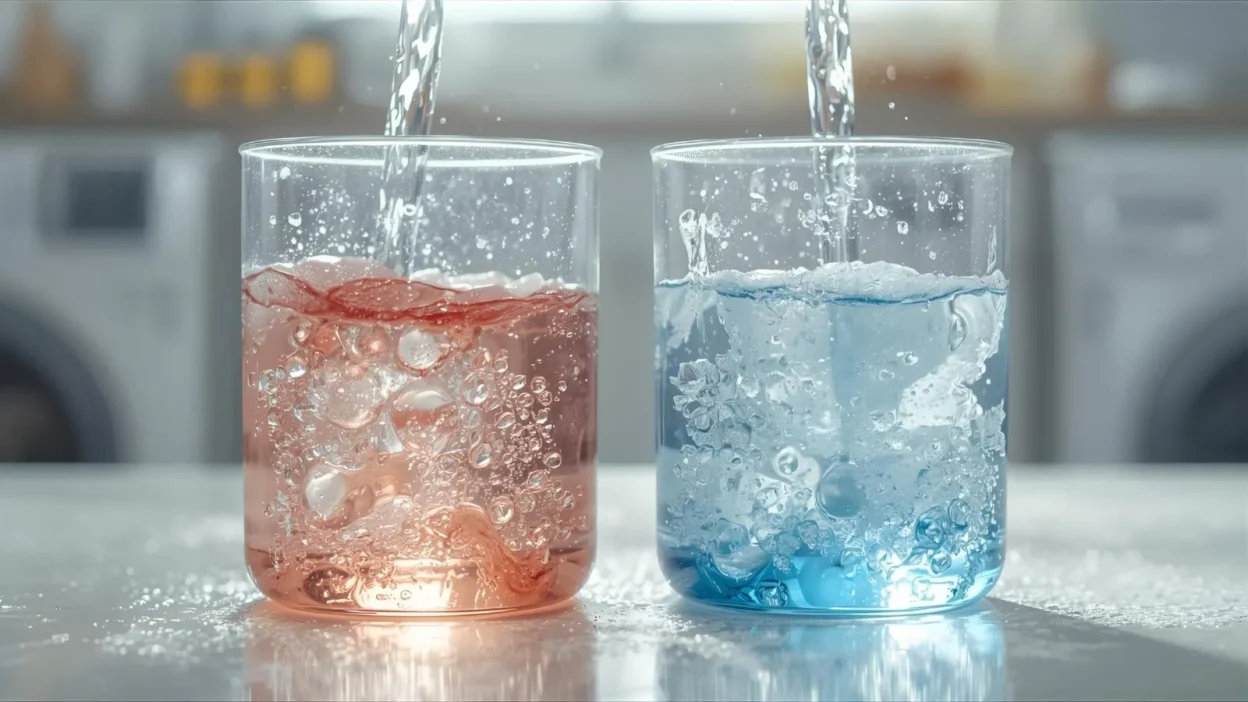If you’ve ever spilled coffee, dropped ketchup, or splashed wine on your favorite shirt, you’ve probably faced the same question: should you use hot or cold water for stains?
This simple household dilemma confuses millions of people every year.
The wrong choice can set a stain permanently, while the right one can save your clothes.
That’s why people search for hot or cold water for stains—they want quick, practical advice to avoid making mistakes.
This guide clears up the confusion. We’ll give you the fast answer, then dive into why the rule exists, how it works across different types of stains, and what laundry experts recommend.
By the end, you’ll know exactly which temperature works best in every situation, so you can stop guessing and start cleaning smarter.
Hot or Cold Water for Stains – Quick Answer
Cold water is best for most stains, especially protein-based ones like blood, sweat, or dairy. Hot water can cause proteins to “cook” into fabric, making the stain permanent.
Examples:
- Cold water: Blood, milk, chocolate, sweat.
- Hot water: Grease, oils, butter, makeup, and some food stains.
Rule of thumb: Start with cold water. If it’s greasy or oily, switch to hot.
The Origin of “Hot or Cold Water for Stains”
The phrase comes from traditional laundry practices passed down through generations. Before modern detergents, temperature choice made the biggest difference in stain removal. Cold water prevented proteins from setting, while hot water helped dissolve fats. Over time, this advice became a common household rule, but confusion still lingers because not all stains behave the same way.
British English vs American English Spelling
Interestingly, while the concept of “hot or cold water for stains” is universal, spelling variations in related cleaning terms differ.
- American English: “color-safe bleach,” “laundering.”
- British English: “colour-safe bleach,” “laundering.”
Comparison Table
| Term | American English | British English |
| Color/Colour | Color | Colour |
| Fiber/Fibre | Fiber | Fibre |
| Odor/Odour | Odor | Odour |
Which Should You Use?
- In the US: Stick to American spellings (“color,” “fiber”) when discussing cleaning products.
- In the UK & Commonwealth: Use British spellings (“colour,” “fibre”).
- For global audiences: Choose American spelling, since it’s most widely recognized online.
When it comes to stain removal itself, use cold water first, then adjust based on the stain type.
Common Mistakes with Hot or Cold Water for Stains
- Using hot water on blood stains → This cooks proteins into fabric.
- Rinsing coffee stains with warm water → It can set the stain faster.
- Skipping cold water rinse before detergent → Always flush first.
- Assuming hot water always works better → Not true for most stains.
Hot or Cold Water for Stains in Everyday Examples
- Email: “Rinse the shirt with cold water first before applying stain remover.”
- News Article: “Laundry experts confirm cold water saves clothes and energy.”
- Social Media Post: “PSA: Don’t use hot water on blood stains, you’ll regret it!”
- Formal Writing: “Cold water is the preferred initial treatment for protein-based stains.”
Hot or Cold Water for Stains – Google Trends & Usage Data
Google search trends show “hot or cold water for stains” is highly popular in the US, UK, Canada, and Australia. Searches peak after holidays (wine, gravy, and food stains) and during summer (sweat and blood stains from outdoor activities).
Comparison Table – Stain Types
| Stain Type | Best Water Temperature | Why |
| Blood | Cold | Prevents setting of proteins |
| Sweat | Cold | Stops yellowing |
| Chocolate | Cold | Avoids protein setting |
| Grease/Oil | Hot | Dissolves fats |
| Makeup | Hot | Breaks down oils |
FAQs about Hot or Cold Water for Stains
1. Should I always start with cold water?
Yes, it’s the safest first step for most stains.
2. Why does hot water set stains?
Heat binds proteins into fabric fibers, making them harder to remove.
3. What if I don’t know what the stain is?
Use cold water first—it won’t make things worse.
4. Can I mix hot and cold water?
Yes, lukewarm water works for some stains, but cold is safest.
5. Is cold water enough without detergent?
It helps flush fresh stains, but detergent is needed for full removal.
6. Do modern detergents make water temperature less important?
Somewhat, but the cold vs hot rule still applies for best results.
7. Does cold water save energy too?
Yes, washing in cold water reduces energy use and protects fabric colors.
Conclusion
Choosing between hot or cold water for stains doesn’t have to be confusing. The golden rule is simple: always start with cold water, especially for protein-based stains like blood, sweat, and dairy. If the stain is oily or greasy, switch to hot water for better results. This strategy prevents permanent damage while giving detergents the best chance to work.
Beyond stain removal, the choice between hot and cold water also impacts fabric care, energy savings, and clothing lifespan. Cold water is safer, greener, and more versatile, while hot water is a targeted solution for grease. By following these guidelines, you’ll not only rescue your clothes but also make smarter laundry decisions every day.




